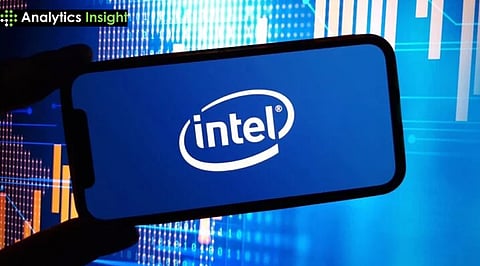

Intel Corporation (NASDAQ: INTC) reported third-quarter 2025 results that exceeded Wall Street expectations, causing its stock to rise by more than 8% in after-hours trading. The chipmaker posted revenue of $13.7 billion, up 2.8% from a year earlier and $0.6 billion above its prior outlook. Adjusted earnings per share stood at $0.23, beating analyst estimates of $0.01.
The company's gross margin was 40%, a 22-point increase compared to the previous year. Operating income, as calculated by non-GAAP, increased to $1.5 billion compared to a loss of $2.4 billion in the corresponding period last year.
The Intel Client Computing Group achieved the highest gains, generating $8.5 billion in revenue and an operating margin of 31.6%. The division saw increased PC demand, which was driven by Windows 11 upgrades and rising interest in AI-enabled technologies.
Intel’s Data Center and AI division also generated $4.1 billion in revenue. The unit’s operating margin rose to 23.4%, up from 9.2% last year, reflecting higher demand for its Xeon processors used in data center infrastructure upgrades.
Intel management attributed the earnings beat to the increasing demand for computing power and workloads driven by AI. According to CEO Lip-Bu Tan, AI is still driving increased compute demand in industries, presenting a new opportunity for the growing Intel portfolio. To strengthen its position in the AI hardware space, the company intends to integrate its CPUs with AI accelerators for use in both consumer and enterprise sectors.
Intel's recent strategic emphasis on AI chips aligns with industry trends toward hybrid architectures, which combine traditional CPUs with AI processors. Analysts see this strategy as essential against competitors like NVIDIA and AMD.
The company also emphasized advances in the next-generation 14A manufacturing process, which aims to appeal to external customers following its difficulties with the earlier 18A manufacturing process.
Intel Foundry Services, an Intel manufacturing business, reported a less significant operating loss of $2.3 billion, compared to last year's loss of $5.8 billion. Although the deficit remains, management highlighted that the foundry has achieved efficiency gains and received early customer feedback, which has positioned the company for long-term recovery.
Also Read: Intel Stock Rally Loses Steam: What's the Reason Behind the Decline?
In the fourth quarter, Intel estimates quarterly adjusted earnings of $0.08 per share and revenue of approximately $13.3 billion, which is slightly lower than analyst estimates. The company observed that the guidance removes revenue of Altera, a semiconductor subsidiary that the company partially divested in the quarter.
The mood of investors is also high due to the significant investment of the US government and NVIDIA earlier this year. Such investments made Intel financially stable and more confident in the market about its turnaround strategy. Following the results, Intel stock was trading at $36.92, just below its 52-week high of $39.65.
Although Intel stock continues to face issues through the company's foundry operations, the recent performance has shown a consistent improvement in profitability. The firm’s emphasis on AI computing, manufacturing innovation, and strategic partnerships has further strengthened its position in the evolving semiconductor market.
